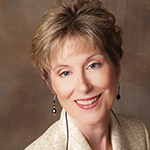Dr. Leverenz highlighted a study on bystander intervention training that helps physicians manage micro- and macro-aggressive discriminatory behavior in the workplace.5 Of 159 physicians who undertook the training and responded to a follow-up survey a year later, 18% said they had had an opportunity to be an active bystander and, of those, 83% intervened. Dr. Leverenz noted that implementing such programs as provide physicians with simple tools (i.e., phrases to use) to intervene in unsafe situations with institutional backing.
Another key area of focus is optimizing assessments, raising such questions as whether CBME is enough to train competent physicians to meet the needs of the public? While lauding CBME, Dr. Leverenz highlighted a study that raises questions about the sufficiency of CBME given that its curricula focus on what learners do. It may unintentionally overlook who learners are and who they are becoming, which is the focus of Professional Identity Formation.6
The study from researchers in The Netherlands raises questions about how to reconcile the different foci of these two competency schemes. CBME focuses on behavioral outcomes, standardization and observed competency. Meanwhile, Professional Identity Formation is focused on a more holistic assessment of physician trainees and who they are becoming—not just the end process of competency. This approach includes consideration of how trainees are learning (i.e., developmental processes) and the unique way in which individuals are gaining competency (i.e., individualization).6 Example: What is happening to a trainee as they move from one competency level to another? A greater understanding of this, said Dr. Leverenz, allows trainees to develop in their own individual way as opposed to a standardized way.
“This paper raises very interesting questions about what CBME may not be doing as we’re thinking about what is happening to our trainees and when we reflect on Professional Identity Formation in our training,” he said.
Mary Beth Nierengarten is a freelance medical journalist based in Minneapolis.
References
- Mannion ML, Xie F, FitzGerald JD, et al. Changes in the workforce characteristics of providers who care for adult patients with rheumatologic and musculoskeletal disease in the United States. Arthritis Rheumatol. 2024 Jul;76(7):1153–1161.
- Nowicki KD, Balboni IM, Cidon MJ, et al. Assessing pediatric rheumatology fellow competence in the milestone era: Past, present and future. Arthritis Care Res (Hoboken). 2024 May;76(5):600–607.
- Alunno A, Avcin T, Haines C, et al. Points to consider: EULAR-UEMS standards for the training of European rheumatologists. Ann Rheum Dis. 2023 Aug;82(8): 1107–1113.
- Gray BM, Vandergrift JL, Stevens JP, et al. Associations of internal medicine residency milestone ratings and certification examination scores with patient outcomes. JAMA. 2024 Jul 23;332(4):300–309.
- Tyson L, Skinner J, Hariharan B, et al. Tackling discrimination in medicine head on: The impact of bystander intervention training. Med Teach. 2024 Feb 24;1–10.
- Sternszus R, Slattery NK, Cruess RL, et al. Contradictions and opportunities: Reconciling professional identity formation and competency-based education. Perspect Med Educ. 2023 Nov 6;12(1):507–516.



